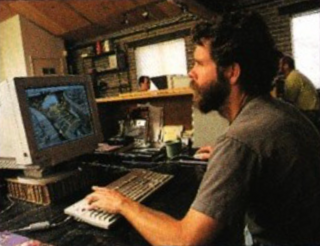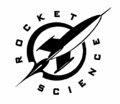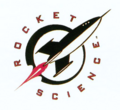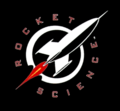Difference between revisions of "Rocket Science Games"
From Sega Retro
m (→Company: few more things) |
m (+release, links) |
||
| Line 81: | Line 81: | ||
==Press releases== | ==Press releases== | ||
| + | *[[Press Release: 1996-02-13: Rocket Science Games launching four new titles into Christmas '96 orbit]] | ||
*[[Press Release: 1996-08-13: SEGASOFT TO PUBLISH FOUR ROCKET SCIENCE GAMES TITLES; ACQUIRES STARHILL BRAND]] | *[[Press Release: 1996-08-13: SEGASOFT TO PUBLISH FOUR ROCKET SCIENCE GAMES TITLES; ACQUIRES STARHILL BRAND]] | ||
*[[Press Release: 1996-09-01: SegaSoft Alters Reality With the Launch of Obsidian]] | *[[Press Release: 1996-09-01: SegaSoft Alters Reality With the Launch of Obsidian]] | ||
| Line 100: | Line 101: | ||
*''[https://web.archive.org/web/20170222022740/https://variety.com/1993/biz/news/rocket-science-taps-h-wood-talent-for-cd-games-109022/ Rocket Science taps H’wood talent for CD games]'' article by Matt Rothman at ''[https://variety.com Variety]'' | *''[https://web.archive.org/web/20170222022740/https://variety.com/1993/biz/news/rocket-science-taps-h-wood-talent-for-cd-games-109022/ Rocket Science taps H’wood talent for CD games]'' article by Matt Rothman at ''[https://variety.com Variety]'' | ||
*''[https://www.latimes.com/archives/la-xpm-1994-07-26-fi-19960-story.html Times Mirror to Invest in Game Company : Media: The publishing firm will put about $5 million into Rocket Science Games, a highly regarded start-up]'' article by Amy Harmon at ''[https://www.latimes.com The Los Angeles Times]'' | *''[https://www.latimes.com/archives/la-xpm-1994-07-26-fi-19960-story.html Times Mirror to Invest in Game Company : Media: The publishing firm will put about $5 million into Rocket Science Games, a highly regarded start-up]'' article by Amy Harmon at ''[https://www.latimes.com The Los Angeles Times]'' | ||
| − | *''[https://www. | + | *''[https://web.archive.org/web/20201130092820/https://www.wired.com/1997/04/rocket-science-takes-a-dive/ Rocket Science Takes a Dive]'' article by John Alderman at ''[https://www.wired.com WIRED]'' |
| + | *''[https://www.inc.com/zoe-henry/how-steve-blank-lost-35-million-and-bounced-back.html How Steve Blank Lost $35 Million (Then Bounced Back)]'' article by Zoë Henry at ''[https://www.inc.com Inc.]'' | ||
| + | *''[https://venturebeat.com/entrepreneur/youre-not-as-good-as-the-press-thinks/ You’re not as good as the press thinks]'' article by [[Steve Blank]] at ''[https://venturebeat.com VentureBeat]'' | ||
==References== | ==References== | ||
<references /> | <references /> | ||
Revision as of 08:02, 23 February 2023
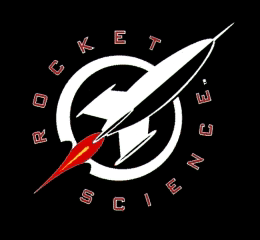
| ||||||
| Rocket Science Games | ||||||
|---|---|---|---|---|---|---|
| Founded: 1993-07[1][2] | ||||||
| Defunct: 1997-04[3][4][5] | ||||||
| T-series code: T-153 | ||||||
Headquarters:
|
Rocket Science Games Inc. was a video game developer based in California's San Francisco Bay Area which produced both home and computer games from 1993 to 1997. The company was most known for their use of full-motion video in titles such as Loadstar: The Legend of Tully Bodine and Obsidian.
Contents
Company
Background
By the early 1990s, improvements within the CD-ROM industry meant the technology could cheaply be brought to the mass consumer market. With this came a massive wave of investment and hype from both corporations and venture capital firms trying to get into "the next big thing" as early as possible. One of the biggest factors behind this trend was speculation, particularly in regards to video: investors unfamiliar with the game industry would see the potential in including video scenes in tradition video games, and coupled with a belief that video was superior to pixel art regardless of its quality, fueled rampant speculation about how much this technology could transform the video game industry. This speculation soon became a fad among venture capitalists, as having a multimedia company in their portfolio was a good way to impress other investors.[9] A chief example, and one often touted as the "future of gaming" by its supporters, was the use of full-motion video to create so-called "interactive movies" in the realm of Dragon's Lair, but with live-action footage.
While live-action, full-motion video games could be successful, their success was usually relegated to very narrow gameplay profiles, like Mad Dog McCree. A number of early attempts at the genre were met with lukewarm critical and commercial reception, and even during its heyday performed notably poorly. Despite this, these failures were viewed by more technologically-savvy developers as not a result of poor gameplay, but poor video quality: that if the video playback didn't look so bad, these games would play so much better. As such, these developers proceeded to stick to their guns and produce a glut of full-motion video titles, particularly on the American Sega CD, convinced that as long as they could keep burning money for a little while longer, the market would wake up and realize the multimedia revolution was here, and their expensive gamble would finally pay off. Their investors frequently thought the same, and in continuing to fund these developers, they further validated their decisions to stick to a failing business model. Ultimately, a significant number of these companies would not survive the end of the decade.
Beginning
Rocket Science Games was first conceived by businessman and avid gamer Peter Barrett around January 1993.[10] When pitched to his close associate and Silicon Valley entrepreneur Steve Blank, Barrett recalls the latter being initially disinterested. But when Barrett described the proposed company's high concept of "Hollywood meets CD-ROM", Blank grew much more interested.[9]
| “ | Peter described the first company in which ‘Hollywood meets Silicon Valley’ and we were enthralled. When he elaborated how CD-ROMs were going to change both the nature of gaming and the economics of the content business, we were certain he had a brilliant idea and by the end of the meeting convinced that this was a company would make a ton of money. | „ |
— Co-founder Steve Blank[9] | ||
After the meeting, the two spent the next month gathering about $4,000,000 in capital[9] (with Blank recalling that funding was so easy[11] that numerous venture capital firms were competing over them[9], and that investment capital was so plentiful he could run the company for 5 years without profit[12]), and in July 1993[1] officially opened Rocket Science Games in Palo Alto, California - in close proximity to a number of software publishers, including Sega of America. A second location in nearby Berkeley served as the company's design and production facility.[8] Peter Barrett (being the more passionate gamer) was tasked with managing the development of video games and software tools, and Steve Blank tasked with handling the company's marketing and financing.[11]
Barrett's "Hollywood meets Silicon Valley" concept was easily digestible by the media, and this marketing angle ended up netting the company stories in Fortune, Forbes, Variety, The Hollywood Reporter, and a number of smaller outlets[11], and with Rocket Science Games even holding a promotional event at the Playboy Mansion.[13] According to Blank, "the theme of our press blitz was all about how we were going to show the old tired game companies the right way to make video games. Our press infuriated the established companies who had spent years building games that sold well, but had zero press recognition."[11] Blank would go on to describe the company as "Industrial Light & Magic and Disney combined!”.[12]
To bolster their concept of a "Hollywood" studio, the company built its initial business strategy around investing heavily in hiring a celebrity development team; a "supergroup" which Blank compared to the likes of the 1960's band Cream.[12] Consisting of well-known Hollywood artists like Ron Cobb and Mike Backes[14], and game development veterans such as Will Wright[14] and Will Harvey[15], a number of staff would be drawn from both famed American special effects studio Industrial Light & Magic and the associated LucasArts; Brian Moriarty and David Fox were two such staff. Additional talent would also be recruited from Amblin Entertainment, Marvel Comics, and Apple Computer.[16] Blank recalls Peter Barrett's credentials being a major factor in convincing staff to join; having developed the Cinepak format, Barrett was an expert in video compression, and his presence helped instill confidence in a new company building itself around the tepidly-received concept of full-motion video.
| “ | A key premise of our new company was that our video compression and authoring technology would revolutionize how games were made and played. We believed that by putting full motion video (i.e. movies) into video games we could tell stories, build characters, have narratives and bring all the 100 years of craft and cinematic experience of Hollywood to the sterile “shoot and die” twitch games that were currently in vogue. | „ |
— Co-founder Steve Blank[17] | ||
Rocket Science Games's actual business was split between video games and software development tools. Most notably, the company had plans to produce an easy to use CD-ROM authoring system that would "revolutionize how games were made", specifically by using efficient video compression technology to bring a cinematic element to a much wider range of games. To this end, Peter Barrett had convinced several of the key members of the Apple Quicktime team to join Rocket Science Games. However, these plans never came to fruition, as by Blank's account, the company was so passionate about the development of the tools that it had never really asked itself why customers would want to buy their product in the first place.[17] While plans for the CD-ROM authoring tool ultimately fizzled, another one of the company's software projects experienced markedly better success. Originally developed within Rocket Science Games as V3O, the 3D technology was eventually sold to Attitude Software in 1997[18] and retitled 3D Anarchy, where it was later sold again to Adobe and renamed Adobe Atmosphere a few years later.[19]
With their Hollywood staff, Rocket Science Games went all-in on full-motion video; specifically the production of Hollywood-style, big budget interactive movies, with their target platforms being the Sega CD and personal computers. Like Hollywood, production was exorbitantly expensive, with the company expecting each of its titles routinely cost $600,000 to $1.2 million to produce.[14] All this investment occurred while FMV games were in their decline, and with the company aware that this genre generally had sold quite poorly in the past; they were assured that their elaborate presentation would surpass previous attempts at making FMV profitable. Blank recalls the company was focused too much on appearances and too little on gameplay, claiming none of the executive staff were gamers[20][14] and that everyone legitimately believed nothing was amiss.[21]
| “ | “When I looked around at our executive staff, there wasn’t a single founder who was a gamer. Worse, there wasn’t a single person on our executive team who had come from a game company. Nor was there anyone with game experience on our board. […] When I pointed out my rising apprehension, [Peter Barrett’s] response was, ‘I’ve been playing games since I was 10. I know what’s great and what’s not. We agreed this part of the company was my responsibility. Don’t worry the games are going to be great.’ | „ |
— Co-founder Steve Blank[22] | ||
Shortly after Rocket Science Games's games were in a state which could be shown to potential customers, Blank dedicated time to going out and directly meeting with his target audience: 14-22 year old gamers. While the feedback would undoubtedly provide insight into an industry he was largely unaccustomed to[17], he then began to realize he lacked an emotional connection to his customers or product, and that this should have served as a greater warning for things to come. Additionally, the feedback received by the company's games was regularly poor. To quote Blank in a conversation between himself and a young gamer, "what do you mean you don’t want to hear about features?"[17]
In face of the continued negative feedback, Rocket Science Games still had plans to expand. In mid 1994, Blank and a business associate travelled to Japan to meet with potential investors, with the intention to work out potential distribution or licensing rights. Despite appearing in person with a number of firms, however, the company was not able to work out any deals, squashing any plans to bring their games to Japan.[23]
Later that October, Rocket Science Games hired their vice president of marketing directly from Sega of America.[24] One of Richard Burns' first tasks with the fledgling startup was to gather early feedback on their first two Sega CD games directly from customers, something which faired very poorly. After only two weeks with the company, Burns began to voice strong concerns about the lacking gameplay; stating the games lacked the addictive power to actually keep gamers wanting to play.[22] Steve Blank states that these pleas were unfortunately ignored by the executive staff, including himself.[11] This disregard was reportedly so severe that the game Loadstar was produced without any playtesting whatsoever. Once programmers had finished bringing the game to a relatively bug-free state, that version was immediately taken to be finalized.
Despite the poor reputation of full-motion video, the developer's focus on highly-marketable presentation and industry hype eventually garnered a significant amount of interest from both investors and fellow game companies. In May 1994, Rocket Science Games was awarded with $12 million in funding from Sega Enterprises and the Bertelsmann Music Group[25] in exchange for the two companies becoming the developer's exclusive North American and European publishers, respectively. Around this same time, the company's two development facilities would later be consolidated together and relocated to a suite in San Francisco's South of Market neighborhood.[7]
Decline
Even with the developer's significant investment in making their vision of FMV gaming profitable, their first games (Loadstar: The Legend of Tully Bodine and Cadillacs and Dinosaurs: The Second Cataclysm were released to mixed reviews and extremely poor sales. Despite production budgets upwards of $3,000,000, the company was shocked to see their flagship games sell less than a few thousand copies each.[26]
| “ | We raised $35 million and after 18 months made the cover of Wired magazine. The press called Rocket Science one of the hottest companies in Silicon Valley and predicted that our games would be great because the storyboards and trailers were spectacular. 90 days later, I found out our games are terrible, no one is buying them, our best engineers started leaving, and with 120 people and a huge burn rate, we’re running out of money and about to crash. This can’t be happening to me. | „ |
— Co-founder Steve Blank[22] | ||
Blank goes on to state that the failure of Rocket Science Games as a whole was something the company's executive staff and investors became unequivocally aware of around January 1995, roughly a month after the botched releases of Cadillacs and Dinosaurs: The Second Cataclysm and Loadstar: The Legend of Tully Bodine.[20] To compound matters further, the following year the company's venture capital firm (who had been backing Rocket Science Games thus far) declined to fund the company further, leaving the developer with nowhere near enough revenue to support the types of games it had built itself around.[27]
Despite this, in February 1996 Rocket Science Games announced a partnership with CyberCash, Inc. to launch a virtual arcade service based on micropayments. CyberCash, a virtual currency company, would provide the financial infrastructure for the platform and use it to jump-start their "electronic coin service". This announcement was heavily circulated by the media and, along with several other micropayment-based services of the mid 1990's, was heralded as the "next big thing" in internet commerce. The platform, later receiving the name InterARC (Internet Arcade)[28], was advertised as allowing players to, "instead of dropping $50 bones for a whole game, you can pay for games on a per use basis-- just like the arcades!"[28] Ultimately, InterARC was never given a firm launch date nor were any specific titles mentioned, and after the initial flurry of excitement, the partnership was never heard from again.
Acquisition by SegaSoft
By the middle of 1996, the situation at Rocket Science Games was dire. With sales virtually nonexistent, the company was struggling just to stay in operation[22], and with attempts to commercialize its CD-ROM development software having proven fruitless.[29] Thankfully, in August of that year the company would receive much-needed funds from SegaSoft, who entered into an agreement to become the developer's sole publisher[30]; although according to company investor Kathryn Gould, "we ended up selling to Sega for nothing".[31] The company underwent heavy restructuring, ceased to become a publisher itself, and was refocused solely on computer game development. A staff of 100 was downsized to 35, including gutting most of upper management and building the studio around the developers, all in the hope that investing in the studio would assist Sega of America in supporting both the PC and Sega Saturn markets.[12] Peter Barrett left during this restructuring, placing some of the blame on Sega and the Sega CD - claiming "they had backed the wrong horse".[32] Steve Blank also stepped down as CEO, replaced with Bill Davis, a senior animator within Rocket Science Games.[12]
A number of in-development games were cancelled during this downsizing, including a sequel to Loadstar (for which the live-acting filming was reportedly complete) and a roller coaster simulator titled DarkRide.[26] Also shuddered was InterARC, the company's planned micropayment-based online gaming platform (despite this, SegaSoft would later partner with CyberCash and use their micropayment system - now named CyberCoin - for their Heat.net online gaming service). Lastly, SegaSoft would entirely acquire StarHill Productions, a budget label previously affiliated with Rocket Science Games.[30]
Unfortunately, this tightening of an already-failing developer had a noticeably negative effect on the quality of their future games. The much-hyped Rocket Jockey shipped missing LAN support that had been heavily promoted to the press and was even advertised on the game's box; it wouldn't be patched into the game for several months. Obsidian also suffered from significant quality issues upon launch, containing several bugs which prevented completion of the game entirely. While the company's SegaSoft games did see some level of critical acclaim, none of them did particularly well financially, and unable to secure additional funding, Rocket Science Games was forced to close down in April 1997.[5]
While the developer's main business appears to have been shuddered, a barebones staff was retained in some capacity to finish the publishing of The Space Bar and Darwin Pond. Although it was hoped that the success of these games would convince SegaSoft to take a second chance on the company, this did not come to pass.[5] Ultimately, after having lost nearly $35,000,000 over the course of its four years in business[20][33], Rocket Science Games was permanently closed.
Legacy
Blank states he learned a number of important lessons from the failure of Rocket Science Games, but three were particularly memorable: "get outside your office and test your product's viability with real customers", "ensure the executive staff and founders are aware of your product's viability", and most crucially, "no formal product launches until you have early sales validating the product and sales process". He goes on to admit that ignoring poor customer feedback was one of his biggest mistakes in managing the company[11]; believing if Rocket Science Games had listened to early feedback and dialed back hype, they could have delivered truly great games, but that "the huge mismatch between expectations and reality of our first games diminished the brand and demoralized the company – we never recovered."[11]
Despite losing out on their returns, his investors had promised Blank another $12 million in capital to start his next company, [20] as by 1994 he had already launched half a dozen successful businesses, and investors knew they'd most likely score another win.[20][11] Ultimately, the company would be Steve Blank's first and last time acting directly as the CEO for one of his startups[34], and after his experience with Rocket Science Games, says "to this day I still can’t play a video game."[35]
| “ | I learned how to dial back the hubris, get other smart people to work with me – rather than just for me, listen better, and act and do what was right – regardless of what others thought I should do. For my next startup I parked the behaviors that drove Rocket Science off the cliff. We established a team of founders who worked collaboratively. When my co-founders and I got the company scalable and repeatable, we hired an operating executive as the CEO and returned a billion dollars to each of our two lead investors. | „ |
— Co-founder Steve Blank[35] | ||
Of all the company's games, Rocket Jockey seems to be the most fondly remembered, having seen a critical re-evaluation by the modern gaming scene, and with the game seeing both a healthy modding scene and multiple attempts at remakes.[36]
Quotes
| “ | I heard about a new company called Rocket Science Games that was just starting up, and Brian Moriarty was one of the first people they hired. I called them to see if I could join. They looked great on paper. They had some really strong people, engineers- some of the people who had invented some of the best codecs for compression. They had some amazing ILM (Industrial Light & Magic) matte painters, modelers. It was an all-star team. But what we ended up producing was really heavily art-driven instead of game-driven, and there really wasn't anyone in the company who were gamers other than Brian and myself. Whenever there were trade-offs, they went toward better-looking art. I was working in a genre that really wasn't my type. It was an action shoot 'em up game. We had to use pre-rendered video instead of graphics rendered on the fly like in Rescue. The idea was that you could take this new CD-ROM, put a bunch of video on there, and have it stream off. You'd get to a junction and you could move left or right, and it'd show a transition scene based on the choice. They got that all to work, but it was taking too long to do all the scenes, computer graphics and the pre-rendering. I ended up taking what was originally a ten- or twelve-level game--with each level offering different gameplay and converting it to ten or twelve levels of the same game, with only slight tweaks. It was a huge compromise. I liked the story we came up with, but the game (Cadillacs & Dinosaurs) was not one of my favorites. | „ |
— Game developer David Fox[37] | ||
Softography
Mega-CD
- Loadstar: The Legend of Tully Bodine (1994)
- Cadillacs and Dinosaurs: The Second Cataclysm (1994)
- DarkRide (unreleased)
- Loadstar II: Showdown on Phobos (unreleased)
- Rocket Boy (unreleased)
- Wing Nuts: Battle in the Sky (unreleased)
Mega-CD 32X
- DarkRide (unreleased)
- Rocket Boy (unreleased)
- Wing Nuts: Battle in the Sky (unreleased)
Saturn
- DarkRide (unreleased)
- Ganymede (unreleased)
- Rocket Boy (unreleased)
- Wing Nuts: Battle in the Sky (unreleased)
IBM PC
- Wing Nuts: Battle in the Sky (unreleased)
Windows PC
- Obsidian (1996)
- Rocket Jockey (1996)
- Darwin Pond (unreleased)
Magazine articles
- Main article: Rocket Science Games/Magazine articles.
Press releases
- Press Release: 1996-02-13: Rocket Science Games launching four new titles into Christmas '96 orbit
- Press Release: 1996-08-13: SEGASOFT TO PUBLISH FOUR ROCKET SCIENCE GAMES TITLES; ACQUIRES STARHILL BRAND
- Press Release: 1996-09-01: SegaSoft Alters Reality With the Launch of Obsidian
- Press Release: 1996-11-22: Blasting Onto Store Shelves, SegaSoft's Rocket Jockey Has Begun Shipping In Time for the Holiday Season
- Press Release: 1997-02-12: SegaSoft, Inc. Names Jim Noonan VP, Product Acquisitions
Artwork
External links
- Official website (1996-11; Wayback Machine)
- Official website (InterARC) (1996-11; Wayback Machine)
- Rocket Science: The first digital supergroup is about to serve up addictive thumb candy - or become the next smoking crater in the videogame biz article by Burr Snider at WIRED
- It Ain't Rocket Science, Stupid, It's Marketing article by Burr Snider at WIRED
- Rocket Science taps H’wood talent for CD games article by Matt Rothman at Variety
- Times Mirror to Invest in Game Company : Media: The publishing firm will put about $5 million into Rocket Science Games, a highly regarded start-up article by Amy Harmon at The Los Angeles Times
- Rocket Science Takes a Dive article by John Alderman at WIRED
- How Steve Blank Lost $35 Million (Then Bounced Back) article by Zoë Henry at Inc.
- You’re not as good as the press thinks article by Steve Blank at VentureBeat
References
- ↑ 1.0 1.1 1.2 http://variety.com/1993/biz/news/rocket-science-taps-h-wood-talent-for-cd-games-109022/ (Wayback Machine: 2017-02-22 02:27)
- ↑ 2.0 2.1 https://alter.com/trademarks/rocket-science-games-75975836
- ↑ Next Generation, "July 1997" (US; 1997-06-17), page 24
- ↑ https://www.science.org/content/article/scientists-computer-gaming-going-game-university (Wayback Machine: 2023-02-07 08:05)
- ↑ 5.0 5.1 5.2 https://www.wired.com/1997/04/rocket-science-takes-a-dive/ (Wayback Machine: 2020-11-30 09:28)
- ↑ https://www.pch.net/resources/NSFNET/regional-techs.94.02 (Wayback Machine: 2022-12-27 22:52)
- ↑ 7.0 7.1 7.2 7.3 https://steveblank.com/2009/06/01/rocks-in-the-rocket-science-lobby/ (Wayback Machine: 2022-10-04 10:33)
- ↑ 8.0 8.1 https://www.wired.com/1994/11/rocket-science/ (Wayback Machine: 2023-01-17 02:45)
- ↑ 9.0 9.1 9.2 9.3 9.4 https://steveblank.com/2009/07/02/rocket-science-2-drinking-the-kool-aid/ (Wayback Machine: 2022-10-05 01:41)
- ↑ https://www.linkedin.com/in/steveblank/details/experience/
- ↑ 11.0 11.1 11.2 11.3 11.4 11.5 11.6 11.7 https://venturebeat.com/entrepreneur/youre-not-as-good-as-the-press-thinks/
- ↑ 12.0 12.1 12.2 12.3 12.4 https://www.filfre.net/2021/11/boffo-games/ (Wayback Machine: 2022-12-25 16:28)
- ↑ https://www.linkedin.com/in/greg-orr-112b3a36/details/experience/
- ↑ 14.0 14.1 14.2 14.3 https://www.inc.com/magazine/19940401/2864.html (Wayback Machine: 2022-05-27 06:10)
- ↑ http://www.findarticles.com/p/articles/mi_m0EIN/is_1996_Feb_13/ai_17991589 (Wayback Machine: 2006-01-11 04:50)
- ↑ 16.0 16.1 Sega Visions, "August/September 1994" (US; 1994-xx-xx), page 18
- ↑ 17.0 17.1 17.2 17.3 https://steveblank.com/2009/07/09/rocket-science-2-hollywood-meets-silicon-valley/ (Wayback Machine: 2022-12-07 00:55)
- ↑ https://phoenixtoews.net/phoenixcv (Wayback Machine: 2020-11-21 14:44)
- ↑ https://bluemaxima.org/flashpoint/platforms (Wayback Machine: 2023-02-14 11:55)
- ↑ 20.0 20.1 20.2 20.3 20.4 https://www.inc.com/zoe-henry/how-steve-blank-lost-35-million-and-bounced-back.html
- ↑ https://review.firstround.com/Looking-for-Love-in-All-The-Wrong-Places-How-to-Find-a-Co-Founder (Wayback Machine: 2023-01-31 07:54)
- ↑ 22.0 22.1 22.2 22.3 https://steveblank.com/2009/07/16/rocket-science-5-who-needs-domain-experts/ (Wayback Machine: 2022-10-05 02:41)
- ↑ https://steveblank.com/2009/12/03/someone-stole-my-startup-idea-–-part-1-are-those-my-initials/ (Wayback Machine: 2022-12-16 22:24)
- ↑ https://www.sec.gov/Archives/edgar/data/1002607/0000950123-96-005789.txt (Wayback Machine: 2018-08-26 15:03)
- ↑ http://www.wired.com/wired/archive/2.11/rocket.science.html
- ↑ 26.0 26.1 https://www.badgamehalloffame.com/ (Wayback Machine: 2023-01-19 21:34)
- ↑ https://steveblank.com/2011/02/03/vc’s-are-not-your-friends/ (Wayback Machine: 2022-12-25 12:05)
- ↑ 28.0 28.1 http://www.rocketsci.com/interarc.html (Wayback Machine: 1996-11-14 06:35)
- ↑ https://www.telecompaper.com/news/rocket-science-games-is-new-video-games-firm--10159
- ↑ 30.0 30.1 Press Release: 1996-08-13: SEGASOFT TO PUBLISH FOUR ROCKET SCIENCE GAMES TITLES; ACQUIRES STARHILL BRAND
- ↑ https://epdf.pub/the-kingmakers-venture-capital-and-the-money-behind-the-net.html (Wayback Machine: 2023-02-07 08:04)
- ↑ https://www.wired.com/1995/07/updata-41/ (Wayback Machine: 2022-11-28 11:52)
- ↑ https://review.firstround.com/Looking-for-Love-in-All-The-Wrong-Places-How-to-Find-a-Co-Founder
- ↑ https://steveblank.com/2009/02/23/out-of-the-ashes-something-isn’t-quite-right/ (Wayback Machine: 2022-12-16 22:24)
- ↑ 35.0 35.1 https://steveblank.com/2013/02/26/failure-and-redemption/ (Wayback Machine: 2022-11-24 02:16)
- ↑ https://arstechnica.com/gaming/2011/07/masterpiece-rocket-jockey-for-the-pc-1/
- ↑ [Honoring the Code: Conversations with Great Game Designers Honoring the Code: Conversations with Great Game Designers]
